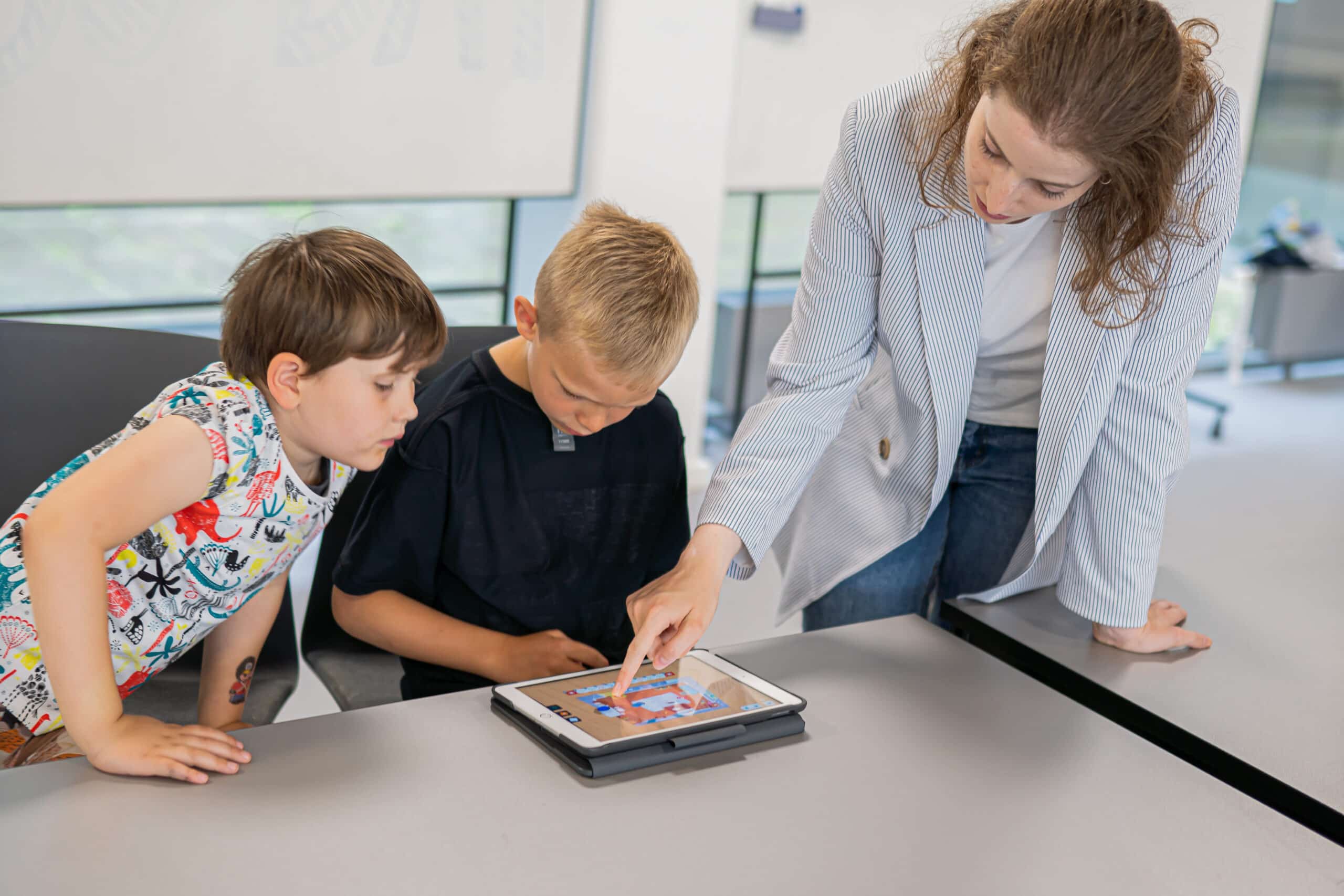Learning to code teaches kids more than how to build an app or program a robot. Much like we teach kids to play sports as a way of teaching them about teamwork, coding teaches kids skills that will be helpful throughout their lives. Let’s take a look at what life skills kids pick up from coding lessons in the K-5 classroom.
Coding boosts Computational thinking
Computational thinking is a structured method of solving problems in a way that computers understand. Everything from breaking down a problem into smaller issues (decomposition), identifying underlying processes and patterns (pattern recognition), focusing on the important information (abstraction) and developing step-by-step instructions (algorithm) that a computer can understand and execute.
In practice, computational thinking means taking a complex problem and knowing how to tackle it in an efficient way. When kids learn how to code, they learn that a solution to a problem is not always obvious. Sometimes solving an issue is a step-by-step process, where you need to identify what is broken before you can come up with a solution. It’s a process that requires critical and logical thinking and often involves failing before reaching the desired outcome.
Coding encourages Perseverance
It’s through failure that kids learn to persevere. Programming is one of the fields where failing is perceived as a normal part of a process. Trying to solve any kind of problem with code means coming up with a solution, writing an algorithm and running it to find out if you actually solved an issue or not. Many developers spend hours and hours on trying to find how to solve a problem.
When children learn to code, they learn that failure is transient, and even though it can be frustrating, it doesn’t mean that they should give up. They should simply try again, until they succeed and produce the result they were looking for. The more problems kids get to solve, the more motivated they will be to persevere next time they’re facing a challenge.
Coding inspires Creativity
At its core, coding is a creative process – facing a problem and coming up with an idea, or connecting existing ideas to develop new solutions. As a programmer you need to be able to envision possible solutions, you need to be creative.
During coding classes kids are presented with a handful of commands that execute simple tasks. These simple commands can be used and combined to program a robot or make a website, it only requires a spark of creativity.
Another aspect of creativity in programming is optimization of code, how do you make the code run faster, how do you make the code shorter, how do you write a clean code (one that is easy to read and understand). Encouraging kids to question what happens if I do this or that to a code is a great way to enhance their exploration and creativity.
Coding improves Communication skills
Writing a code or an algorithm means giving a computer step-by-step instructions on what actions to perform. Learning a coding language means learning new syntax. Computers need commands to be spelled out from top to finish. They can’t fill out gaps, like our logical thinking does. This means that in order to learn a coding language, kids have to learn to communicate their ideas clearly in syntax that a computer can read and understand.
Coding improves children’s communication skills by pushing them to really think about what they want to say, what’s the simplest way of expressing it and then how to organize their thoughts in a logical way. Logical communication is a great skill set in life, whether we are in a personal or professional setting. It allows us to explain our ideas, convey the right message and eliminate misunderstandings.
Coding enhances Collaboration skills
Coding in your classroom creates the perfect environment for collaboration. It’s through collaboration that most kids discover their strengths and get to work on their weaknesses. For example, one kid may be good at coming up with creative solutions, whereas another one might be good at writing the actual code. Both kids show off their strengths while learning from each other. What’s more, when working together kids learn to communicate & share, to be patient & respectful, to take turns & help each other.
Bringing coding in the K-5 classroom
Children grasp how technology works with ease. Therefore, introducing coding fundamentals at an early age can only be beneficial. Early learners should be given the opportunity to learn coding through screen-free solutions such as the KUBO Robot and the TagTiles® coding language, a physical representation of code.
With hands-on solutions like KUBO, kids can learn how to code, while developing a skill set they can use in school and beyond.






